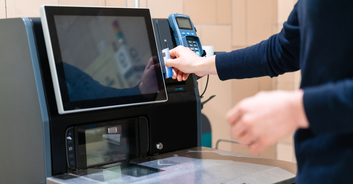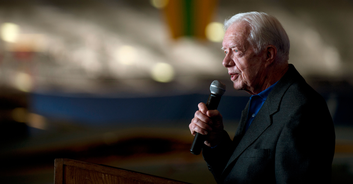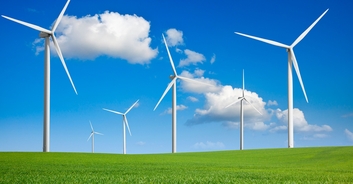Inventors from California and Florida have come together to create a device which harvests drinking water from thin air. The technology is expected to help tackle water shortages in equatorial countries, disaster zones and isolated communities.
Furthermore, they have just won a $1.5 million prize to invest in the project. Rather than compete with one another, the two organisations came together in order to combine their inventions into a viable solution to the water crisis. The Skysource/Skywater Alliance team won the coveted Water Abundance XPrize with their WEDEW (“wood-to-energy deployed water”) system - which uses a shipping container to collect water from the air.
Every 10 seconds, someone dies of a water-related disease. However, this technology has the potential to combat water shortages using materials which are readily available. “We do a lot of first principles thinking at XPrize when we start designing these challenges,” says Zenia Tata who helped launch the competition. “At any given time, it holds 12 quadrillion gallons - the number 12 with 19 zeros after it - a very, very, big number.”
Californian architect and TED talk alumnus David Hertz has long had a focus on sustainability (including using the wings of a decommissioned 747 jet as a roof for a house) even if it wasn’t always deliberate. “I’ve been repurposing things, really without being so conscious about it, from a very young age,” he explains. “From making skateboards by taking clay wheels off of rollerskates and we’d mount them onto wood. I was really at the birth of BMX, also. I just continued with that idea of what we could do creatively and what we could find or reuse.”
The first of the two inventions, Skywater, mimics a cloud by taking in warm air which hits cold air and creates condensation. The condensation is then collected and stored. However, where this system uses a lot of electricity, it was combined with a biomass gasifier. When filled with biomass, the material is vapourised by a process called pyrolysis. This is what makes a compost heap hot and it’s this process that creates the warmth needed for the Skywater system to work.
“The most abundant source of fresh water is the Earth’s atmosphere,” the Skywater website explains. “When atmospheric humidity condenses, it falls as rain. Skywater replicates this natural process of condensation by simulating the dew point, which allows it to make water continuously, even in low humidity conditions. This is Skywater's patented adiabatic distillation process.”

However, rather than just being a standard non-electrical, air-to-water system, it also creates biochar - a charcoal which can be added to soil to help plants grow. In areas where biomass isn’t readily available, green energy sources such as solar power could be used to create the necessary temperatures.
But it doesn’t stop there. “Again replicating nature's process,” the website states, “Skywater generates ozone to purify the water. Ozone (O3), a natural occurring gas that is produced in nature when it rains, binds with water to eliminate bacteria and other impurities. Skywater does this by pumping ozone through the water as it is collected. Unlike other water treatment methods such as chlorine, ozone leaves no taste.”
Hertz has designed dozens of cutting-edge homes up and down America’s west coast, but this project represents something perhaps even more progressive. “It’s a carbon-negative technology,” he explains. “I think the future of technologies is going to be moving to this restorative, regenerative model that actually helps to repair the damage we’ve done.”
“Our process is one that is really antithetical to the slow-moving infrastructure that exists that is not able to be responsive to a changing climate as it is in the case of say, Cape Town, for instance,” Hertz says. “One could imagine these shipping containers being positioned in a state of readiness throughout the world to be able to respond to disasters for both energy and water.”
The system is already in place in a number of locations however, the addition of biomass power is a direct result of the competition. The money will be used to provide the units to NGOs (Non-Government Organisations) in order to provide clean drinking water in hard-to-reach or drought-prone areas.
This breakthrough is just one of many recent developments in the field of sustainability. However, the project has proven that engineering can provide solutions to some of the world's most formidable problems - and that the power of collaboration over competition cannot be understated.












